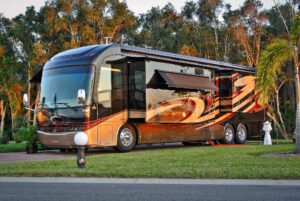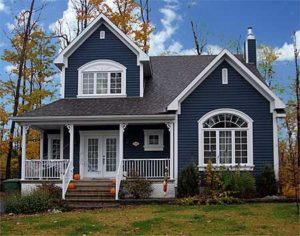Table of Contents
ADUs, Duplex, Apartments, Buildings and California Homestead Exemption
Does the California Homestead protect a separate dwelling unit with renters?
Is a duplex or apartment protected by the California homestead exemption? What about a separate building like an ADU on the same lot. Or a very large lot. It depends.
Accessory dwelling units (or ADUs) are becoming quite common in California. The question is whether the Calif homestead is broad enough to cover ADUs. The California homestead exemption lets someone in a bankruptcy protect some or all of the equity in their residence. What are the limits of this though?
Starting with a common scenario: if someone rents out a room in their home, is the unpartitioned house now subject to limited protection? What if it becomes partitioned?
The issue only gets more complicated from there. Debtors can live in a duplex or apartment building they own, but how extensive (or limited) is the asset protection of the homestead exemption in California? What about a home on a (very large) lot? Two dwellings or ADUs on a lot? Let’s take a look.
Accessory dwelling units or ADUs
An accessory dwelling unit (or ADU) is a separate living place that’s inside or sharing a lot with a family home. Public policy in California is encouraging ADUs to help address the housing crisis. They can be a source of rental income for the homeowner, and provide an affordable place to live in a state where the supply is low and the cost of living (and housing) is high.
If the owner of the ADU files bankruptcy, does the California homestead exemption extend to the separate dwelling or can it lead to loss of ADUs? This is a hot topic right now. In fact, scroll to the bottom to learn about a recent case that has bankruptcy lawyers in California very very cautious about filing bankruptcy with ADUs.
The Statute of the California Homestead Exemption
First, the juicy part. The California homestead exemption now allows debtors to protect $300,000 – $600,000 (or more) of equity. Learn more about how the maximum Calif homestead number gets adjusted for inflation, and what the current number is.
Are duplexes, lots, and apartments protected by the homestead exemption? What is?
The California Civil Procedure Code, at Section 704.740, says: “the interest of a natural person in a dwelling may not be sold under this division to enforce a money judgment except pursuant to a court order for sale obtained under this article and the dwelling exemption shall be determined under this article.”
Some key takeaways there:
- Natural persons are protected, not corporations or other entities.
- Dwellings of those persons are protected.
Natural person
If it wasn’t clear enough from above, the Calif. legislature added CCP 703.020, subdivision (a) of the Enforcement of Judgments Law, which provides: “The exemptions provided by this chapter apply only to property of a natural person.”
“There is no ambiguity in the governing statutes; the dwelling exemption is available only to a natural person, not to a corporation.” California Coastal Com. v. Allen, 167 Cal. App. 4th 322 (Calif Ct of Appeal, 2nd App Dis 4th Div. 2008)
What is a Dwelling under the California exemption?
Section 704.710, subdivision (a) defines “dwelling” as:
“a place where a person resides . . . .”
A Dwelling is where you reside
So the person has to reside there.
What if you’re in the hospital, or on vacation when the bankruptcy is filed and not physically there? Or do live there but are listing your home and intend to sell it after the bankruptcy?
These are key questions. Click through to find out if courts have decided if someone needs to live in the homestead dwelling on the day of filing bankruptcy, or if something more is required. Also, can married couples double the homestead? Further, the 1215-day rule is key.
A Dwelling is not a Building but a Place
But also note that the statute says it’s a place where a person lives. The law doesn’t say the building or structure. If the California state legislature had intended to limit it to a building, it would have. But the statute has no such limiting language.
The statute gives some examples. Returning to CCP 704.710:
“… a person resides and may include but is not limited to the following:
- A house together with the outbuildings and the land upon which they are situated.
- A mobilehome together with the outbuildings and the land upon which they are situated.
- A boat or other waterborne vessel.
- A condominium, as defined in Section 783 of the Civil Code.
- A planned development, as defined in Section 11003 of the Business and Professions Code.
- A stock cooperative, as defined in Section 11003.2 of the Business and Professions Code.
- A community apartment project, as defined in Section 11004 of the Business and Professions Code.”
Dwelling isn’t just a house, but can be a boat or even mobilehome. Some key words or phrases jump out at us there. “Include but is not limited to” sure sounds like this isn’t a complete list, and can be expanded, based upon the discretion of the court, and the individual facts of a particular case.
Further, the “house together with the outbuildings and the land” seems very broad and expansive. Does a small home with some sheds, barns, and a farm house get protected along with the hundreds of acres they’re all situated? It sounds like it, but read on.
Further, Subdivision (c) of section 704.710 provides: “‘Homestead’ means the principal dwelling (1) in which the judgment debtor or the judgment debtor’s spouse resided on the date the judgment creditor’s lien attached to the dwelling, and (2) in which the judgment debtor or the judgment debtor’s spouse resided continuously thereafter until the date of the court determination that the dwelling is a homestead.”
Court cases interpreting the scope and physical limits of California homestead exemption: dwelling, lots, renters and a duplex.
While the above definitions sound pretty clear, nothing screams for litigation like a home with tons of equity and a bankruptcy trustee or creditors who want a piece of it to be excluded from protection of the homestead exemption.
The actual substance of the law hasn’t changed much over the last 150 years or so. As such, the first tests in court started early on, and are still relevant today.
Back to 1934 for a basic rule

“It has been held that where two separate houses stand upon the real property sought to be impressed with a homestead, only one of which is occupied as a dwelling by the claimant, the other being rented to tenants, an attempt to dedicate both as a homestead is inoperative. However, if there be but one building a portion of which is used bona fide as a family residence, the fact that the portions are rented to tenants does not impair the right to select the structure and the land on which it is situated as a homestead.” Vincenzini v. Fiorentini, 2 Cal.App.2d 739, 741 (Calif Ct of Appeals 1st App Dis Div 1, 1934), cites omitted.
There are a couple of takeaways from that. First, if there are two houses, only one is protected by the homestead, even if it’s all on the same lot and real estate.
Second, if there’s one building, renting a part of that building doesn’t interfere with the debtor’s ability to exempt the whole thing.
The Vincenzini case was followed by other courts in the years to come.
Phelps and Supplementing Income
A decade later into the 1940s, the concept of a dwelling building being split for different purposes and forfeiting the homestead was still being tested.
“The weight of authority is directly at variance with appellant’s contention. Where the building occupied by a family is suitable for a home and is used for that purpose, the owner is not to be deprived of his homestead rights merely because a part of the building is used for supplementing the family income.” Phelps v. Loop, 64 Cal. App. 2d 332, 334 (Cal Ct of Appeal, 1944), affirmed in 73 Cal. App. 2d 39 (Calif Ct of Appeal 1946).
Homestead not sacrificed even if primarily business purposes
The California Court of Appeal, in Phelps, continued.
“If it be determined that the very business carried on by the homesteader is for the purpose of maintaining the home, the fact of the conduct of such other activity does not defeat the owner’s right to designate the property in his declaration. Using a building so occupied, even chiefly for business purposes or renting a part of it, is not inconsistent with the homestead right. Where premises are acquired for, and are actually occupied as, the bona fide home of a family, the head may select it as a homestead even though incidentally a major portion of the building may be used by him for deriving revenue.” Id.
The homestead right, then, was found not to be diluted if the home was used for business purposes, even if those business purposes were “chiefly” the purpose and a major portion of the building.
This was followed by other Calif appellate courts, decades later.
“The use of a building partly or even chiefly for business purposes or the renting a part of it is not inconsistent with the right of homestead provided it is and continues to be the bona fide residence of the family.” Viotti v. Giomi, 230 Cal. App. 2d 730 (Calif Ct of Appeal, 1st App Dis 2nd Div. 1964).
What if someone converts their home into a duplex?
Of course you knew it had to happen. Someone has a home, and to earn extra income, they divide the building into a duplex, essentially two homes. Does converting a home to a duplex to rent out for rental income impact the California homestead?
A California Court of Appeals says… no.
“Plaintiff argues that the transformation of the building into a duplex destroys the homestead as to the part of the house not occupied by defendant. Since, however, the homestead relates to but one building, which is being used as a residence by defendant, this argument is without merit.” Oppenheim v. Goodley, 306 P. 2d 914 (Calif Ct of Appeal, 2nd App Dis, 2nd Div. 1957)
Multiple families, one building: Can an entire apartment building still be protected as a dwelling for the homestead?
Let’s say debtor owns an entire three-story building, but lives in only a portion of it and rents the rest of it out to a few, or even a few dozen families. It’s still a dwelling. Is it partitioned or divided for homestead purposes?
“Appellant argues that the apartment building was not a proper probate homestead because Mrs. Nelson could only live in a portion of it. The fact that the Church Street apartment house was occupied by Mrs. Nelson and the deceased in his lifetime and could have been declared a homestead by the deceased is a fair test of the appropriateness of its selection (Estate of Levy, supra). If a building is the actual bona fide residence of the widow, she may legally select it and the land on which it is situated as a homestead, no matter how large (Heathman v. Holmes, 94 Cal. 291 [29 P. 404]). [13b] The fact that the other 29 apartments are rented to tenants is not determinative. In Estate of Pickard, 169 Cal. 162 [146 P. 425], the probate homestead consisted of a lot with a 12-family apartment building. The deceased and his wife had occupied one of the apartments as their residence and rented the others to tenants. Estate of Nelson, 224 Cal. App. 2d 138, 145 (Calif Ct of Appeal 1964)
One family, but multiple buildings… extended?
The logic from Phelps above was applied to multiple buildings on one lot, in a case decided by the California Court of Appeal.
“We see no valid reason for distinguishing between the three-story building on a single lot with 18 apartments and flats, only one of which was occupied by the homestead claimant, in Phelps v. Loop, supra, and the two houses here, located one behind the other on a single small lot.” Bodden v. Community National Bank, 271 Cal. App. 2d 432 (Calif Ct of Appeal 1969)
Facts matter, and depending on how the other building is situated and used, another, second house on a small lot can still be a homestead, whether or not it’s an “outhouse.”
This ruling followed up a similar result from just a few years prior, as we return to Nelson, the apartment case with 29 other families above.
“In the Estate of Levy, supra, the probate homestead consisted of a lot containing two buildings, one of which was a residence, while the other contained flats and a store. The court held that the use of one of the buildings chiefly for business or rental purposes was not inconsistent with the right of homestead.” Estate of Nelson, 224 Cal. App. 2d 138, 145 (Calif Ct of Appeal 1964)
Between Nelson (1964) and Bodden (1969), is this 1966 case that seems to limit the two:
“Under the circumstances, it was not an abuse of discretion to set apart a homestead, from decedent’s separate property, consisting of an undivided one-fourth interest in the 4-unit apartment building for eight years. The court was not required to grant petitioner the exclusive possession of the entire building or of any part thereof.” Estate of Moskowitz, 247 Cal. App. 2d 499 (Calif Ct of Appeal 1966).
Beyond the building
But limited by ..
We find no appellate case in which the issue determined was that a probate homestead was properly impressed upon a piece of property where there are multiple dwellings, each or any of which is complete as a proper residence for homestead purposes. To the contrary, the case of Maloney v. Hefer, 75 Cal. 422 [17 P. 539, 7 Am.St.Rep. 180] held that where there were two houses on the one lot and each was divisible and separate from the other, only that portion actually the residence of the homesteader was subject to the dedication of the homestead. Estate of Schmelz, 259 Cal. App. 2d 440 (Calif Court of Appeal 1968).
Inexact descriptions
Sometimes, descriptions of the homestead are inaccurate or inexact. Should that invalidate the whole thing? Courts look at the intent.
“Appellants’ contention is that the declaration apparently covered two different parcels, and that it cannot be determined which was intended. As hereinbefore indicated, the argument is untenable. Since only one street address is given, it seems obvious that this is the property intended. Even where a declaration of homestead covers premises in addition to those occupied as a home, such fact does not invalidate the declaration as to the premises properly included therein.” Oktanski v. Burn, 138 Cal. App. 2d 419 (Calif Ct of Appeal 1956)
This was expounded upon by the appellate court just a few years later, covering a number of other inaccuracies:
“Thus the California cases have upheld the validity of a homestead (1) where the property was identified by a proper street address but with an incorrect Lot and Block description added thereto, Oktanski v. Burn, 138 Cal.App.2d 419, 291 P.2d 954; (2) where the declaration failed to contain the statement required by the statute that “she (the wife) therefore makes the declaration for their joint benefit,” Johnson v. Brauner, supra [131 Cal.App.2d 713, 281 P.2d 52]; (3) where the homestead was filed on five lots and the Court held the homestead was valid as to one of the lots, Guernsey v. Douglas, 171 Cal. 329, 153 P. 227; (4) where incorrect description of 160 acres of land in the declaration was followed by “said homestead known by the name of `Geary’s Ranch,'” In re Estate of Geary, 146 Cal. 105, 79 P. 855; and in other similar cases.” Esten v. Cheek, 254 F. 2d 667 (Court of Appeals, 9th Circuit 1958)
Dough… Rey… Me
While it looks like this was pretty much settled between the 1930s and 1960s, the California homestead partition issue is still being fought in bankruptcy courts today. Enter the case of Ms. Maria Teresa Melendez Rey in the Central District of California.
Facts:
Ms. Rey filed a Chapter 7 in July 2022, and then in Feb 2023, after a series of battles with a creditor, converted her case to Chapter 13. Creditor then objected to her claim of a homestead exemption. More facts from the court’s summary in its June 2023 ruling on the objection:
“Debtor testified she moved into her home on 1922 Bunker Avenue in 2017 and has lived there since. Situated on 1924 Bunker Avenue is a six-bedroom, two bath home that can be divided into a duplex featuring two adjacent residences each with three-bedrooms and one bath.”
Let’s stop there for a second. Rey has one lot, with two homes, and one of those homes was turned into a duplex. She lives in the non-duplex. She claims the homestead on the whole thing. What’s the result? Based on Phelps, Bodden and Nelson, could a building beyond her own still get protected by the homestead?
Additional facts:
“The two structures are separated by a fence and have separate driveways, entrances, parking, utilities and mailboxes. Debtor has never resided in the duplex.”
Now it’s starting to look and feel a bit different from an apartment building, or even an outhouse. Further, she’s never lived in the duplex building, only the other building on the same lot. This complicates things for Ms. Rey.
Ruling
The bankruptcy court ruled:
“Debtor further argues that because the Property is a single lot that is indivisible and cannot be sold piecemeal the entirety constitutes Debtor’s “dwelling” under CCP § 704.710(c). This argument is without merit. Courts have long entertained causes and proceedings to determine what portion of the land described in the declaration of homestead is needed for the declarant’s convenient use and what portion thereof is ‘excess land.'” In re Rey, (CDCA 2:22-bk-14119-WB, June 2023).
In reaching this conclusion, the Rey bankruptcy court relied on an unpublished 9th Circuit BAP opinion, In re Margaret Bond from Apr 26, 2006.
The name is Bond
The BAP in Bond said:
“There is no legal limitation on the amount of land or the number of lots that can be declared as homestead, the only test is whether the property is actually used as the family residence and whether the surrounding property claimed is necessary or convenient for the enjoyment of the family home.” (citing the Miller treatise, infra).
This rule was culled from cases, but also bankruptcy treatises, and pieced together. In doing so, the Bond BAP noted:
“It is noteworthy that the discussion of homesteads in the Miller & Starr treatise on California real property is consistent with that in California Jurisprudence. MILLER & STARR § 13.10. The Miller & Starr treatise explains that, even in its popular sense, the word homestead refers to the home and residence of the family and means the actual dwelling house in which the declarant resides, together with actual and customary appurtenances, including outbuildings of every kind necessary or convenient for family use.”
It then wrote:
“In other words, there is no formula for determining the propriety of the use of surrounding property claimed, but it cannot be protected by the homestead if is it neither necessary nor convenient for the enjoyment of the home.”
It looks like we’re coming to an (unofficial) rule. The homestead exemption is not infinite, and the limit of the homestead, implied the Ninth Circuit BAP in this unpublished opinion, is that the surrounding property has to be necessary or convenient for the home’s enjoyment. Not both necessary and convenient, but either one.
That will bring us back to… Rey
Applying the unpublished Bond standard to the facts in Rey, the bankruptcy court then concluded:
“The Court finds that the 1924 Bunker Avenue duplex and appurtenant land and one-half of the garage are not necessary for the use and enjoyment of Debtor’s home and are not entitled to the homestead exemption.”
Is 1924 Bunker an outhouse? Is it distinguishable from Phelps (apartment) and Bodden (two structures)? Stay tuned.
As of this writing in September 2023, the Rey case is currently up on appeal to the Ninth Circuit BAP.
2024 Update: The Bankruptcy Appellate Panel affirmed the bankruptcy court ruling in Rey, finding that the homestead exemption and protection did not extend to the ADUs where the renters lived. Yes, even if it was in an outbuilding, on land owned by the debtor on which the debtor lived. Read my separate write-up about the Rey BAP decision.
Note that in the BAP opinion, one judge wrote a separate ruling saying that the California legislature should take action on this topic, an area about which we’re very energized.
Bottom line
What seems to be clear in 2025 is this from 1934: If one building is used for multiple families, for rental income or a business, even primarily business, it’s protected.
Other buildings on the same land can be protected, but sometimes not. The rule may be if the building or land is necessary or convenient. Or the rule may still be that from Nelson/Levy or Bodden, where even a building for primarily business purposes, even a separate building, was protected.
Perhaps the California legislature will change the law regarding what a “dwelling” is to be more clear that it includes all structures on the land on which debtor resides. Maybe the 9th Circuit will overturn Rey in some other case one day. However, with California encouraging ADUs for public policy purposes, it would discourage use of ADUs (and hurt housing supply) if it can result in the homeowner losing the other living unit just because he filed bankruptcy.





